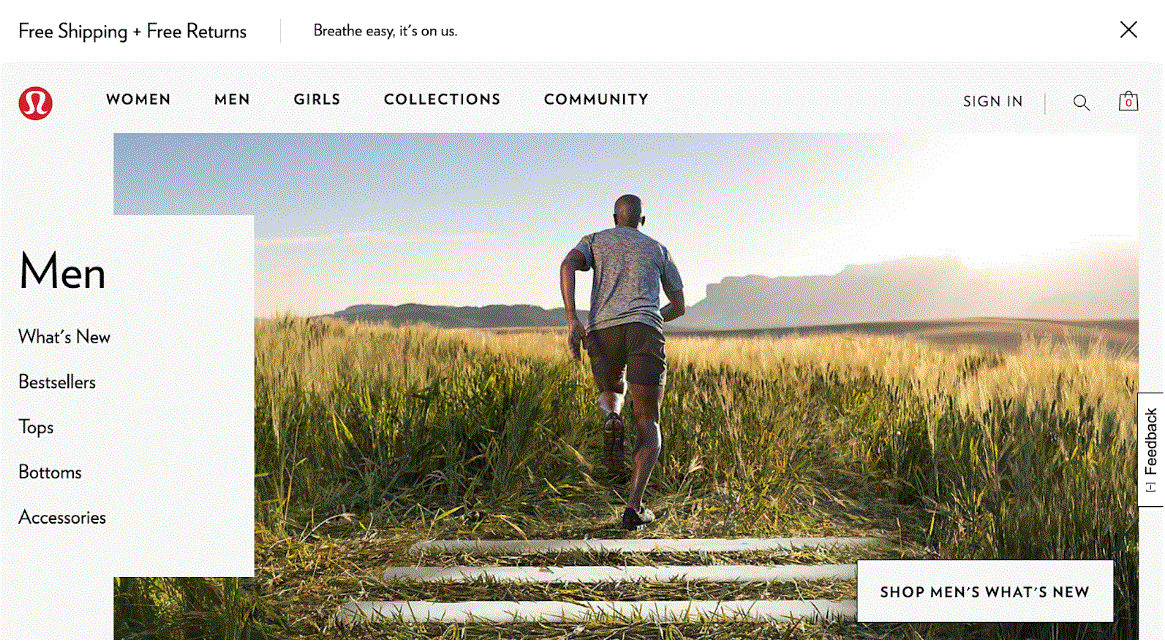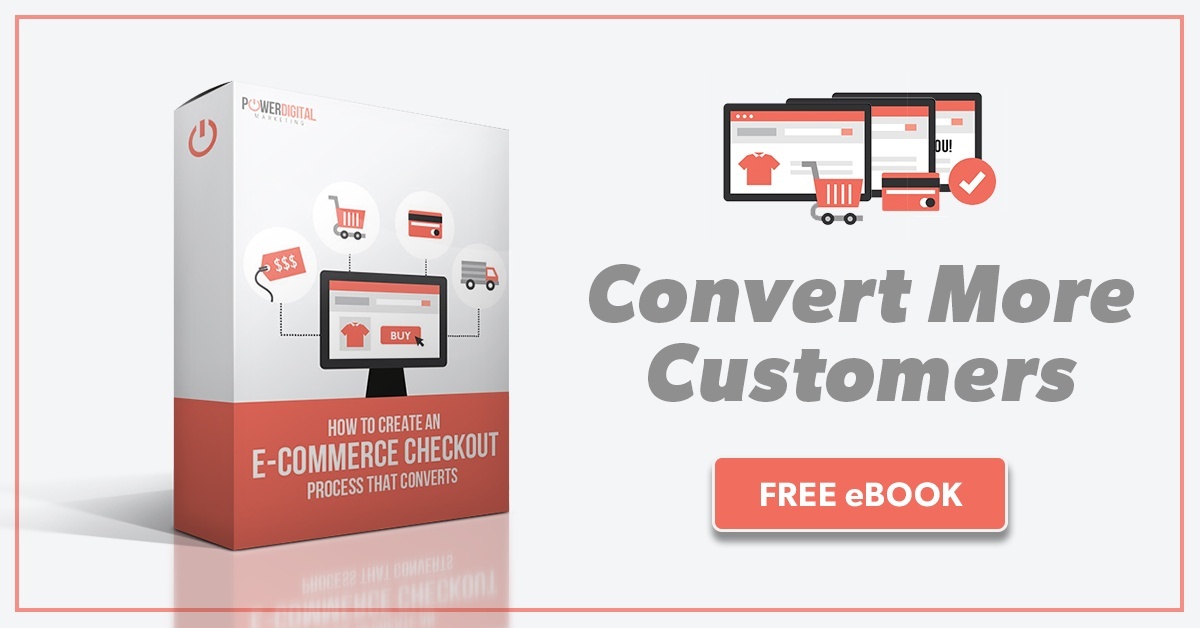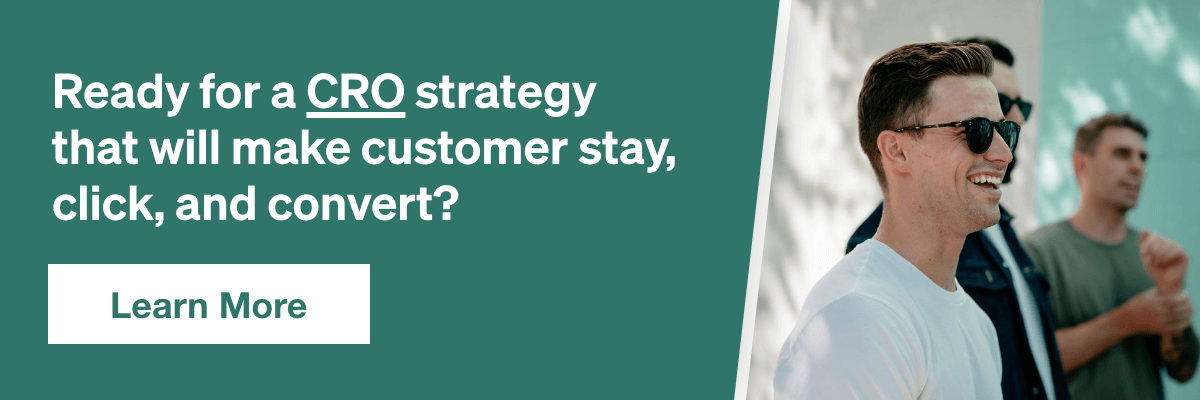How to Improve Your Conversion Rate
The Number One Thing You Need to Look at For Your Business’s Bottom Line: Conversion Rate
When it comes to online marketing campaigns focused around performance aka generating a lead for your sales team, an ecommerce sale, or acquiring a new customer, there are many components that go into generating a positive ROI and provide an opportunity for mass scaling and volume of customer acquisition.
It’s easy to get overwhelmed as a marketer, a CEO, or businessperson on what parts of your campaign to optimize, what components are working already, and what components are not.
Often times marketers and business owners are really focused on bringing more traffic, higher quality traffic, getting that traffic at a lower cost, marketing to your current customers, and getting those current customers to repeat purchase.
We agree that all of these things should be in focus but the success of all of these things comes down to one core metric that is often times overlooked and not given nearly enough energy when it comes to improving… conversion rate.
So, what do we mean by this? Conversion rate is the percentage of individuals who convert to your goal. To give you more context, we’ll give you a few examples for your business.
- For an Ecommerce Business: the conversion rate represents the percentage of people who make a purchase on your site. Typically for ecommerce, a 2% or higher conversion rate is really good. That means for every 100 visitors, 2 people are making a purchase.
- For a Lead Gen Business: conversion rate is the percentage of visitors to your website that book or becomes a lead for your sales team. Typically for lead gen, 5% or more would be a good conversion rate as a baseline.
- For a Subscription or SaS Business: conversion rate is the percentage of visitors that create an account or become a member. For SaS, the conversion rate benchmark can vary a little, but typically 5-15% is a good conversion rate with this type of business.
Now that we’ve defined what conversion rate is and what industry benchmarks are in each type of business, let’s dive into why this metric is so critical to your business and oftentimes overlooked.
Conversion rate is so critical because when you have thousands or more visitors coming to your site, minor improvements in conversion rate will net huge returns, whereas slight improvements to volume of users or slight decreases in the cost of getting those users to your site will have an impact, but not the same vast impact as improving your conversion rate.
For some reason, way too many business people ignore conversion rate or look at it too robotically. We’re going to give you five actionable steps you can take today to improve your conversion rate and increase profits.
Tip #1: Look at Analytics
Go into your analytics account and filter by conversion pages (Behavior Reports → Site Content → Landing Pages) that are getting the most traffic and pick your 2-3 pages that have the most traffic and are below the average conversion rates we shared above. Simply identifying the biggest opportunity pages is step one here and making them a focus for your team will net you better results and is first key to success.

Tip #2: Look at These Pages Like a Human
The next step is to evaluate these pages both on desktop and mobile and judge them from your own perspective. Ask yourself these questions:
- Is the offer or CTA being positioned on this page compelling?
- Is the offer clear and concise; can you wrap your head around it and would you convert?
- Is the action the customer is supposed to make clear or is it confusing to know what to do next?
- How many fields or pages does a user have to visit to complete their goal and are there ways to make this process faster/easier for them?
- Does the page load fast enough when you navigate? If you had a poor internet connection, would you hit back or navigate through the page? Check out our resources on site speed optimization.
- How is the design? Is the page impressive and are there visuals that help tell the story and compel the visitor to convert?
- Does the page have any social proof or third party validation? This can be customer reviews, user-generated content, influencer photos, association logos etc.
- What is the experience above the fold? Are you wasting space above the fold or are you hitting people with messaging above the fold, meaning you see it without having to scroll down. This shows what we mean by “above the fold” for the brand Lululemon.
 Once you make a list of these seemingly obvious tweaks you can make, take this list and prioritize it for potential fixes. Based on how mature your business and your marketing is, we would recommend your next step be one of these two things.
Once you make a list of these seemingly obvious tweaks you can make, take this list and prioritize it for potential fixes. Based on how mature your business and your marketing is, we would recommend your next step be one of these two things.
A Business That has Done Limited Testing and Marketing vs. Business Far Along in Marketing
Limited Testing and Marketing: For a new business that has done little to implement changes to its website or conversion rate, you should immediately implement some of the above common sense improvements, moving quickly to improve your conversion rate. We recommend moving quickly because the downside is low, you may already have a bad conversion rate, the user experience is not ideal, so there’s no need to waste time or create hurdles for yourself. The key is to implement quickly, measure performance, and iterate further on the changes.
Business Far Along in Marketing: If your business is mature and you have done marketing and potentially updated some things for conversion rate, take these hypotheses above and leverage a tool like VWO or Optimizely and begin to aggregate data on how visitors are interacting with the page. Once you aggregate significant data (for an established business this could be thousands or even hundreds of thousands of visitors) review the data trends against your hypothesis. Select the number one test that the data and your hypothesis suggests to be the most impactful and begin to A/B test your current variation versus this improvement until you have substantial data and a clear winner. When you have a clear winner implement that change and move onto your next test.
No matter what phase of your business and marketing you’re in, you can benefit from improving these pages, but one of the big mistakes we see brands make is analysis paralysis. Be careful how many hurdles you put in front of yourself because every day you go without improving your conversion rate is many dollars lost. The key is to take action quickly and have a person accountable for this and work at consistently.
Tip #3: Analyze Your Traffic Sources and Look at The Intent of The Visitor
Now that you have begun to improve and test your pages and how to improve them, the next step is to get the right prospect to the page and make sure you’re driving quality traffic while also understanding where they are in the buyer process and what their intent is to assure your conversion point and messaging really aligns with them.
To give you an example from offline, let’s look at me as an agency owner networking at a conference with two different approaches.
Approach A) I meet you at a conference and immediately ask you for $20k for Power Digital to run a marketing campaign without you knowing much about me or our services. You would probably walk away because you don’t know me or trust me and are not ready to be sold to.
Approach B) Now pretend I met you at a conference and we started a conversation, talked marketing, and shared some experiences relevant to each other.
Which of these two approaches would petition me in a better place to at some point earn your business?
The answer is clearly approach B! Way too often you will find that your traffic wants to be spoken to like approach B and you’re hitting it with approach A. Make sure your conversion points and offers align with where the prospect is in the buying cycle and how you can cater to them.
Tip #4: Hire Someone to Do This for You…
Obviously it’s funny coming from us that we think you should hire someone to optimize your conversion rate, but we do this all the time, and moreover, it’s really difficult when running a business or have lots of marketing initiatives to put the focus on conversion rate and it requires a few different types of people: 1) a data person 2) a great copywriter and 3) a designer. If you have the team, follow the process above and win big. If you don’t, consider hiring someone specifically to help you improve conversion rate. It’s very, very measurable, the goal is very clear, and it can be done very efficiently. Sometimes as business owners and marketers we get so close to our own business that it helps to get some outside perspective.
Conclusion
Whether you run an Ecommerce, Lead Gen, or Subscription based business, conversion rate is one of the most important components of your bottom line. Small adjustments in conversion rates results in huge gains for your business. Therefore, improving conversion rate is imperative to increase your profits. However, business owners often go about this the wrong way. Follow the actionable steps listed above to make sure that your business is performing at its absolute peak ability.



















